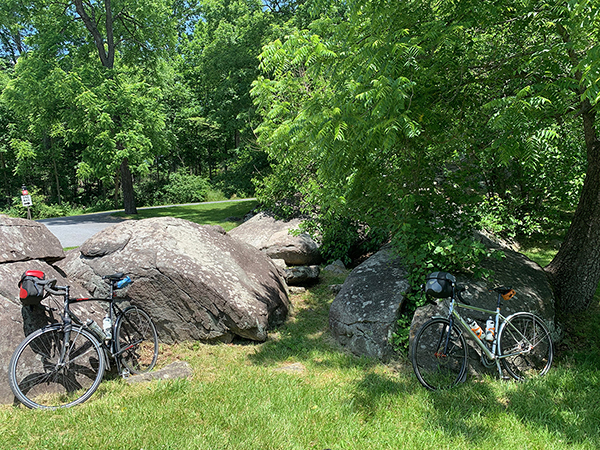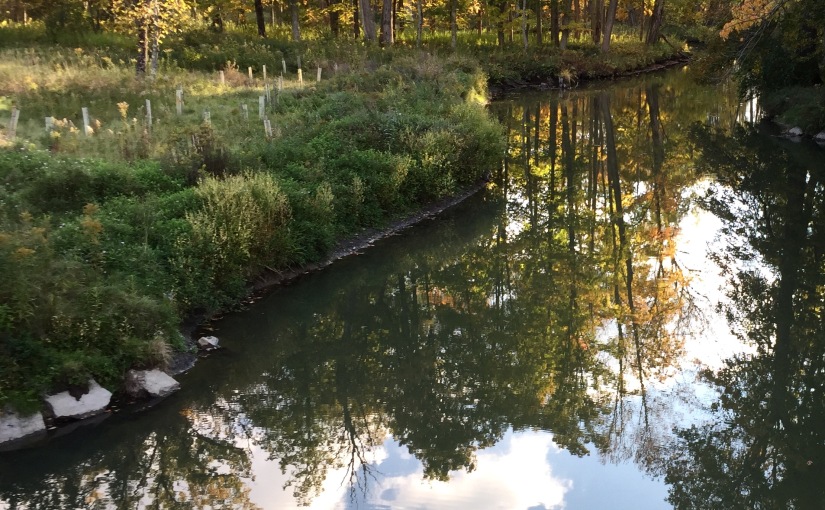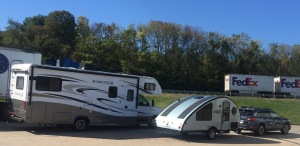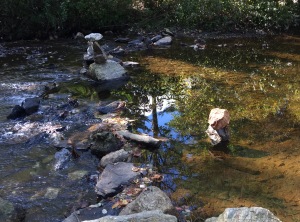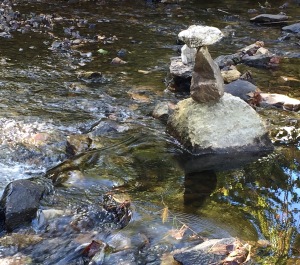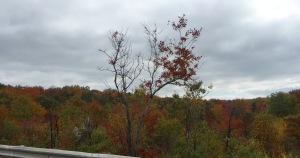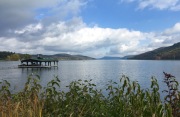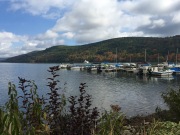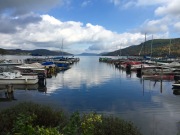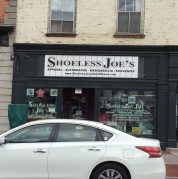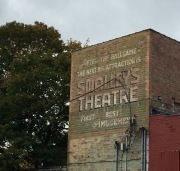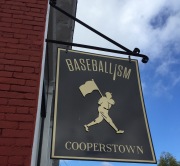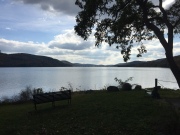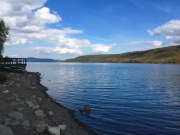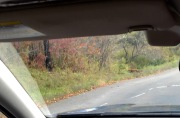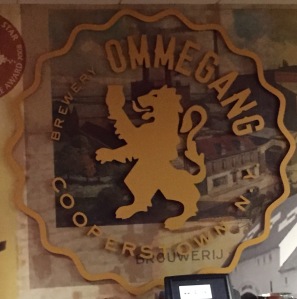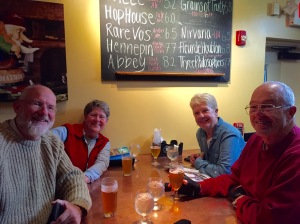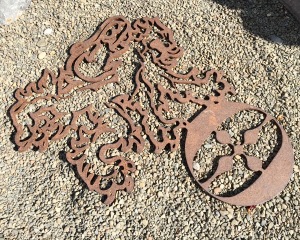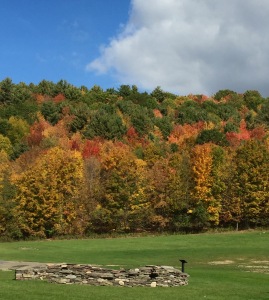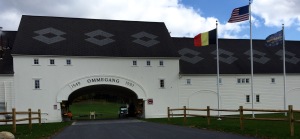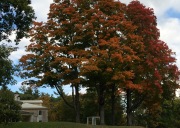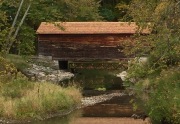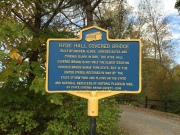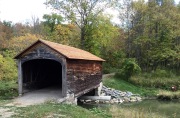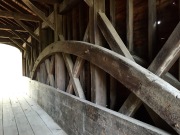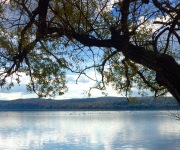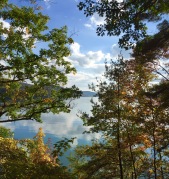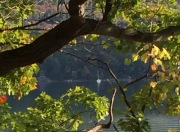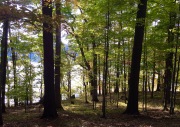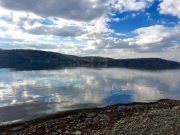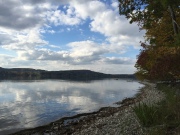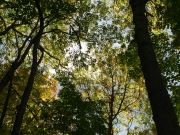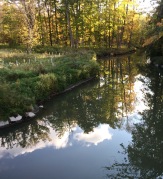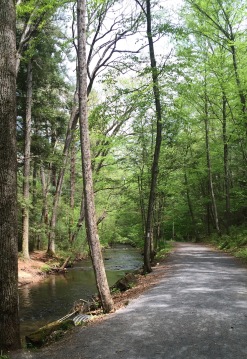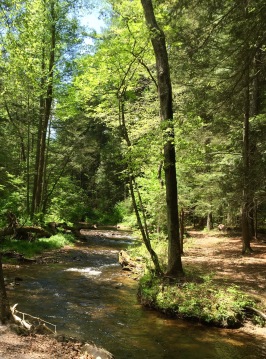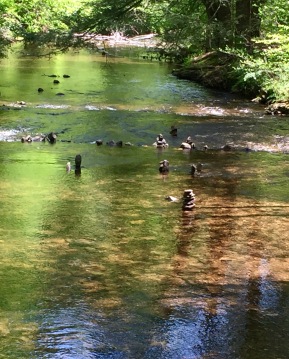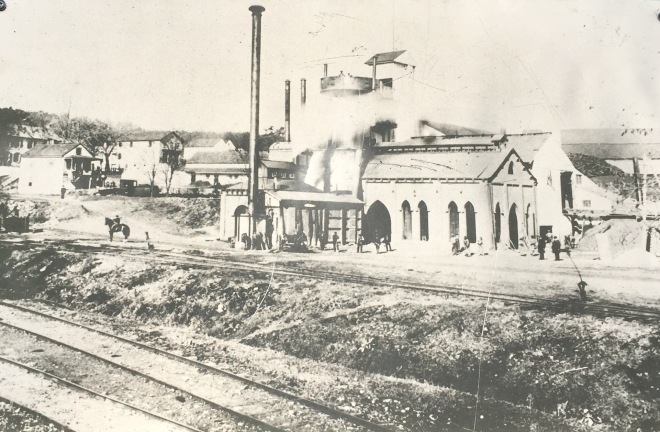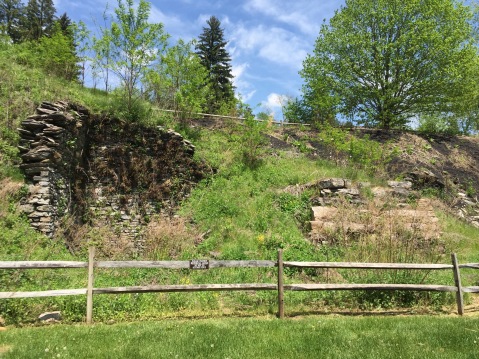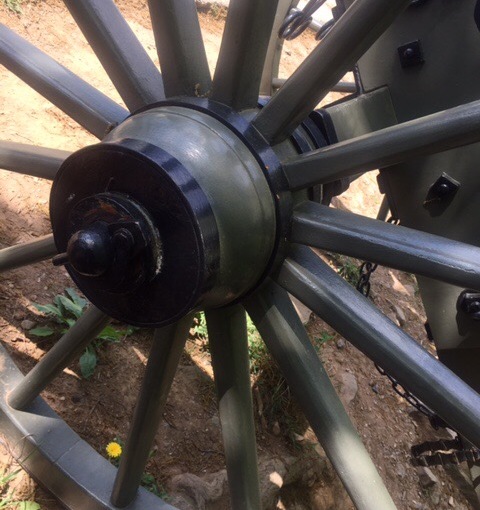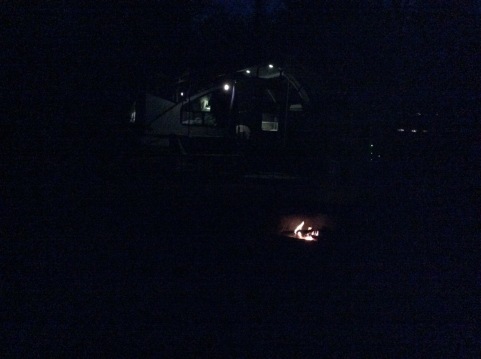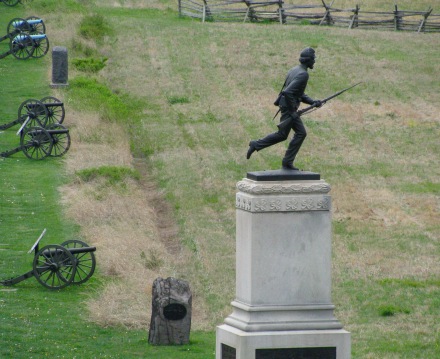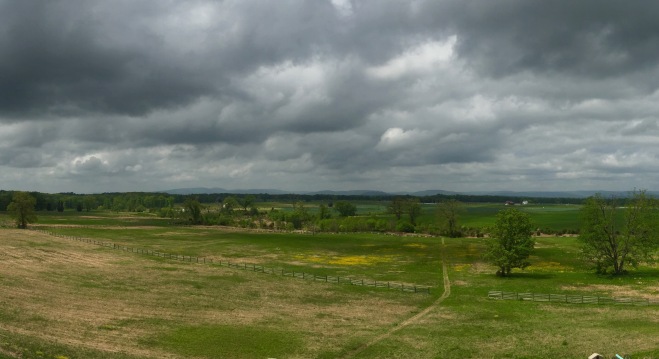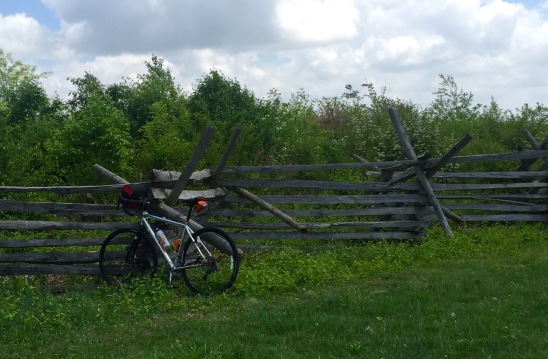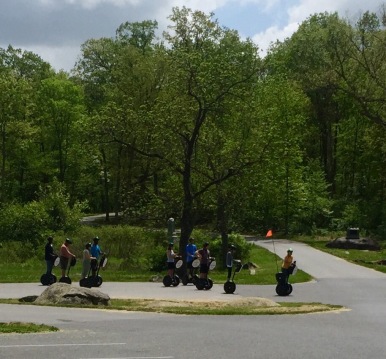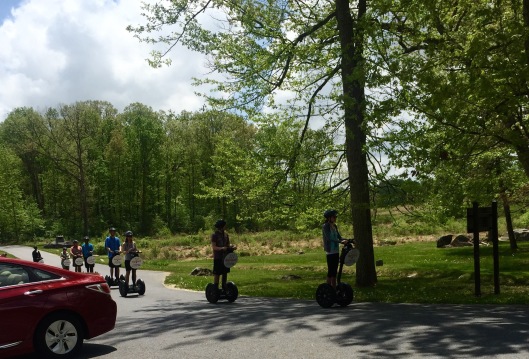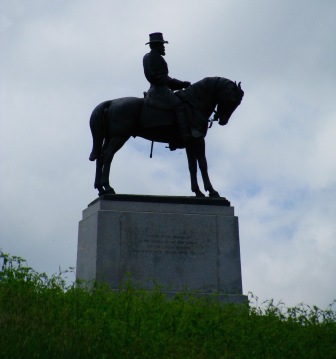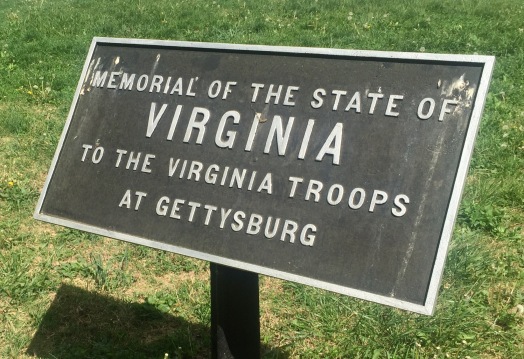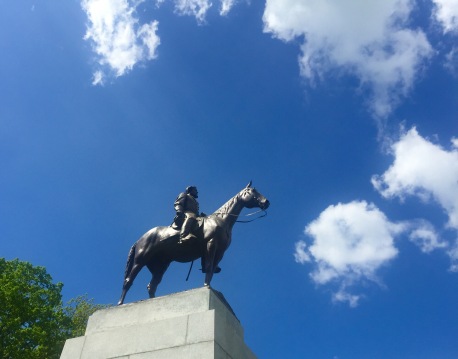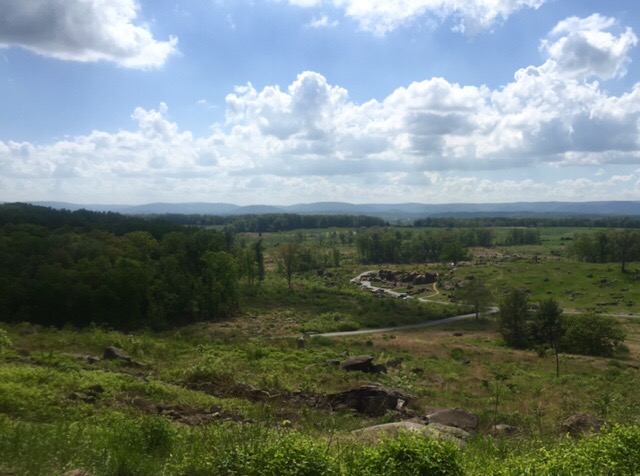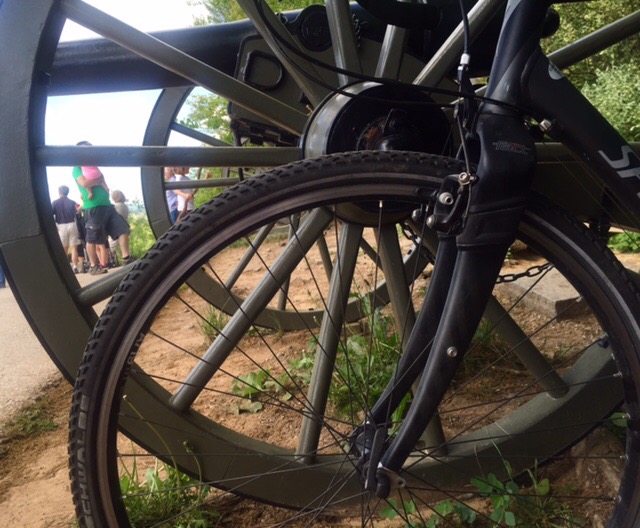We departed for our next great travel adventure on June 14, headed to Pine Grove Furnace State Park in Pennsylvania. We waved goodbye to our housesitters, gave the pups a final scratch behind their ears, and got away around 9:30 AM. The early departure allowed us to roll into camp around 4 PM, including stops for lunch etc.
Traveling heavy, we packed some extra stuff and equipment on this trip to adapt to Camping in the Time of Pandemic—trying to minimize grocery shopping in strange towns, we carried a lot of freeze-dried “hiking” food packets. There were also campgrounds along our anticipated itinerary that only accept campers who are “self-contained,” meaning the bathhouses were closed to limit transmission of Covid-19 (and the attendant cleansing requirements that common sense and visitor safety required).
So we also carried on board a new, freestanding camping toilet (although our Alto has a toilet on board, we use that cabinet for food storage—it is what we call our “pantry”) and we experimented prior to departure with converting our screened shelter into a private bathhouse, to be set up at the utility side of our trailer where the exterior shower access is.
We also packed in lots of hand sanitizer, extra paper goods, and disinfecting wipes for use when the campground bathhouses were actually open. And face masks, of course.
So we arrived at our good old friend, Pine Grove Furnace State Park, at which we’ve stayed several times in the past. For more about the campground and state park, see the prior post about it that you can access here.

Our site this time at their Charcoal Hearth Campground was #48, the first in the “no dogs” section, and John and Mary—our companions from home who will be sharing this adventure for the first 10-ish days—had the last “pets allowed” site so they could accommodate the canine member of the family, Riley. All of the sites at this campground lack water, so there are potable water spigots scattered around, and we stopped at one to fill our water tank. We did have electricity, although there are some sites without, and others without that are designated tent only. Each of the two loops of the campground has its own bathhouse.
Our bathhouse there was open and very well cared for by the staff—clean and tidy, and with a scheduled “deep clean” on Saturday and Sunday afternoons, when they closed down for a few hours. Masks were required in the bathhouses, the camp store, and the ranger’s office. Although we did not get into the Appalachian Trail Museum this time (a very neat visit) they were also open on a limited schedule and face masks were required inside. They also limited visitors because it is a rather small space.
We took a bicycle ride down to the actual charcoal furnaces, and read the storyboards about the process, and the AT follows part of an old rail bed that carried the charcoal from the furnaces to points of sale in PA back in the day. Now the rail bed is a “hiker biker trail” and goes from the furnaces to the smaller of the two recreational lakes, called Fuller Lake, then along a paved road (with little vehicular traffic) to the larger of the State Park’s two lakes, Laurel Lake.

The route we took, to Laurel Lake’s dam, was about 5 miles one way, and upon our return we went to the camp store to have an ice cream. There, we were harassed a bit by a couple of yahoos sitting in their car in the parking lot, smoking stinky cigarettes. They were “talking between themselves” but loudly enough for us to hear that they were dissing us for wearing masks. They also commented on what they assumed was our political bent, our level of fear for a virus that they believed did not exist, and how their governor had spooked the residents of the Commonwealth about the danger by shutting everything down and only opening businesses back up slowly and carefully. We ignored them until they drove away, taking their cigarette smoke with them (but leaving their trash on the ground next to where they’d parked).
The next day (June 16) we trundled with our bikes out to Gettysburg, and unfortunately, found the visitor center closed. To really grasp the enormity of the Civil War battle that took place there, and to appreciate all the monuments to those involved, one really must see the diorama of the battlefield that is the center point of the visitor center experience.
But we rode along a part of the battleground Jack and I had not seen before, with the hope of riding through the cemetery, but bicycles are not allowed in the cemetery. Also of note is that the map of the battleground used for the “auto tour” or the self-guided tour is not even remotely accurate. We got turned around a few times because the distances indicated were never to scale, and many of the roads on the map were unnamed.

Also, a problem was the scarcity of open restrooms and comfort stops available due to the pandemic.
But it was a beautiful day and we noted that places like Gettysburg and other Civil War battlefields are the exactly appropriate spots for the statues to both northern and southern players in that long-ago conflict—as opposed to those Confederate statues of the Jim Crow era that have been erected in the public squares of 9/10ths of the southern towns in the United States. Just sayin’.
Since the battlefield is in PA; since every state involved in the battle sent monuments to their lost sons; and since PA sent 34,000+ soldiers to the battle, the PA monument is understandably impressive. Each of the brass plaques holds many, many names, and the brass plaques are everywhere in and on the monument. Jack was looking for some of his family names among those listed, but did not find any, even though he knows some of his ancestors fought in the war.
As we’d done in the past (and since the town of Gettysburg is right in the middle of the historic area) we had lunch at the Lincoln Diner, right near the rail station at which President Lincoln arrived in Gettysburg to deliver his famous address. The diner had a large back room in which we were able to be appropriately distanced from one another and others, and the wait staff were all wearing masks.
In the end, Jack and I cycled longer than John and Mary, who wanted to stroll around the historic town a while after lunch, and we clocked almost 15 miles that day, climbing Little Round Top and Big Round Top mountains, as we’d done last time we cycled the battlefield.
On our third and final full day at Pine Grover Furnace State Park, John and Mary stayed local to hike with Riley along some of the many beautiful hiking trails at the SP, while Jack and I drove to Newville (about 15 miles away) to embark on another repeat cycling experience for us, the Cumberland Valley rail trail.

On our last visit, the total length of the trail was in the neighborhood of 20 miles. Plans for extensions on both ends were mapped, but at the time, the plan was in its infancy.
This time, we noted both ends of the trail had been lengthened, and so we were able to cycle from the Newville Trail Head all the way south to Shippensburg proper, past Shippensburg College, to the new Trail Head and rail depot, where we took a Kind bar break and admired the sculptures and the beautiful day.

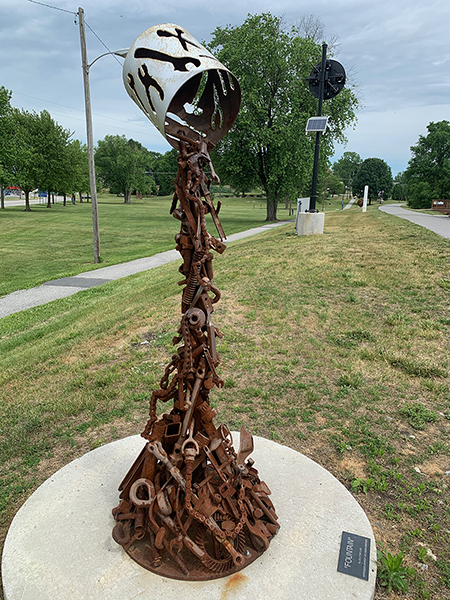
We really worked the pedals heading back to Newville’s Trail Head, where the newly-paved section right at the picnic area/Trail Head was still cordoned off for reasons not at all obvious to us. But as we’d done on start toward Shippensburg, we rode along the grass as instructed by the signs, and bypassed the newly-paved Trail Head section to see how far the extension to the north went.
What we found was a shorter but still significant extension, although the scenery was not anything to shout about, as it ran along a high-tension electric wire easement, and had no shade at all. At the end, we got to a sign (see pic below) that we thought was amusing, in that the “exit ramp” was a grassy downslope.

In all, we made 25+ miles at a very good pace (11.91 mph) for our third time out on the bikes since we rode our local, New River Trail on May 3—weather, Blue Ridge Parkway construction, and home-bound chores preventing any kind of a head start on the cycling season back home.
On Thursday, June 18, we packed up and drove ~6 hours (again, with stops) to Glibert Lake State Park in New York.

